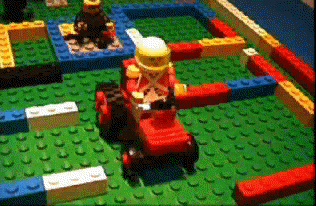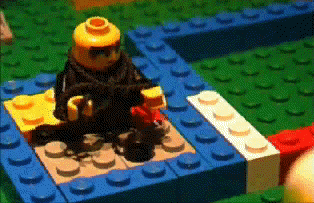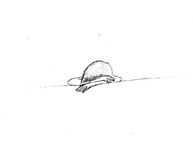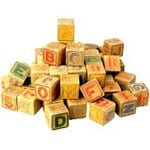"Stutter House" and the International Year of the Child Who Stutters - 2004
by Luc Tielens (Belgium)
The year 2004 has been proclaimed the International Year of the Child Who Stutters. To celebrate this event we would like to invite all children who stutter to help create a mosaic of the images and metaphors they use to describe their stuttering, which will help adults and other children understand what it is like to stutter. This mosaic was inspired by "Stutter House" created by Sander, a 10 year old from Belgium. To symbolize his stuttering, Sander used Lego blocks. All children who stutter are invited to send their ideas and images, either digitally to Judy Kuster (judith.kuster@mnsu.edu) or by mail to Judith Kuster, Communication Disorders, 103 Armstrong, Minnesota State University, Mankato, Mankato, MN 56001, USA. Their work will be displayed as an online exhibition on next year's 2004 ISAD online conference and to celebrate the International Year of the Child who Stutters."
A major argument for not starting therapy with young children, mostly put forward by their parents, is: "His stuttering doesn't worry him." In fact, what they may be suggesting is: "If we start with therapy, our child will become more conscious of his stuttering and start worrying". We try to convince these parents that, by waiting, their child will create his own concept of stuttering by using the information he gets from his environment and from his own fantasies. Why not put him at ease by telling him what stuttering really is about and how it works. We use the word "stuttering" even with very small children. Why not? It would only be harmful if we used it in a negative sense. Avoidance of the word "stuttering" automatically results in the word taking a negative value. The way parents think and feel about stuttering is not only influenced by their knowledge but also by the way the child manages the "problem".
The use of metaphor is explored by Trudy Stewart in another paper in this year's online conference. We have found it very helpful to use metaphors even with young children who stutter, to help explain stuttering to them, and just as important, to give them an opportunity to explain their stuttering to us.
One example we have used is the famous fable of the beetle and the centipede, where the beetle asks the centipede how he manages to move so graciously and perfectly with so many lets. The centipede thinks it over and from that moment on he cannot get one foot before the other.
Using metaphors is a very strong medium to make things clear. But it has, undoubtedly, also disadvantages: every comparison necessarily distorts or simplifies reality. Nevertheless it is a useful vehicle to convey specific ideas. If you share a metaphor you have a common understanding. Apart from those children who have difficulty understanding figurative speech, children respond positively to the use of metaphors. It enables them to explain things and at the same time, to put across their feelings. After a while it can even become a way of communicating for them about problems such as stuttering. That is what Sander did, in a very convincing way.
We were surprised when one day Sander (10 years old) walked into the therapy room with a construction of lego-blocks on a big plate (like a birthday cake). In the middle of the plate he had written "Stutter-house" To our astonishment he started to explain his construction thoroughly. Because it was such a unique depiction, I filmed Sander explaining his creation so that we could show it to other therapists and people who stutter. This little film lasts about 4 minutes. It does not only reflect his knowledge about the stuttering process, but it is also an excellent tool to explain this process to other clients and parents.
Hopefully you will be able to view the video. To see the video, you will need a recent version of QuickTime player, which is available free for both PCs and Macintosh at here. This is a first time effort in streaming video at MSU, Mankato. The screen will be small, there is no sound, and the video doesn't start for about 15 seconds, although you can move the cursor to load it more quickly. You can paste the url rtsp://stream0.mnsu.edu/stutter-house.mp4 into your web browser and it may launch the QuickTime player. (The streaming video on our campus does not yet support RealPlayer). If it does not launch QuickTime player on your computer, open QuickTime player manually, go to the file menu and select "Open URL in New Player." Enter rtsp://stream0.mnsu.edu/stutter-house.mp4 and the video should load. If you are unable to access Sander's video, a few pictures from the video are below.




Speech-language pathologists, parents of children who stutter, and any children reading this, please share the images and metaphors developed by children. They can use any medium - paper and pencil, colors or paint, clay, toys, paper machee, photographs, etc. - whatever helps the child describe stuttering. Some more examples that people have used that might give you some ideas!
 |
 |
 |
|
added September 30, 2003


